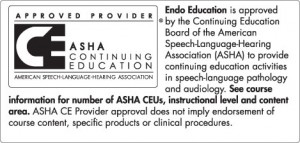International Course on Oropharyngeal Dysphagia
Session#1: Intro to Oropharyngeal Dysphagia and its Prevalence
Course Description
This course begins with a review of the primary factors that designate dysphagia as a serious threat to the geriatric population. Specifically, it provides detailed information relating to the actual definition of dysphagia, the best calculated prevalence rates and a thoughtful description of the social and economic burden that it imposes on patients, families and caregivers. The next session provides a detailed summary of the challenges that are involved in carrying over clinical research outcomes into daily clinical practice. Barriers to knowledge translation impact all members of the healthcare continuum and ultimately limit patient access to novel and exciting clinical breakthroughs. Clinical practice guidelines can help develop an enhanced pathway towards knowledge translation. The course concludes with a review of factors that elevate overall risk of nosocomial aspiration-related pneumonias. Specific description of dysphagia as well as a strong emphasis on oral bacteria as precursors for development of this condition.
Time ordered agenda: 73 minutes
18min 44sec Definition, prevalence, and burden: Julie Cichero, BA, BSpThy, Hons, PhD
22min 22sec Consensus Statements; Evidence based guidelines: Mark Bayley , MD, PhD
32min 44sec Dysphagia and risk for aspiration: Joseph T Murray , PhD, CCC-SLP, BRS-S
Learning Objectives
1. Define and describe dysphagia and the commonalities that exist in terms of the impact that it plays on affected populations.
2. Speak to challenges that exist in developing and implementing results from sound dysphagia research.
3. Discuss the relationship that exists between dysphagia and aspiration in medically fragile patients.
Disclosures
TAKE THE CLASS
POST-TEST, COURSE EVALUATION, CEUs, PRINT CERTIFICATE
